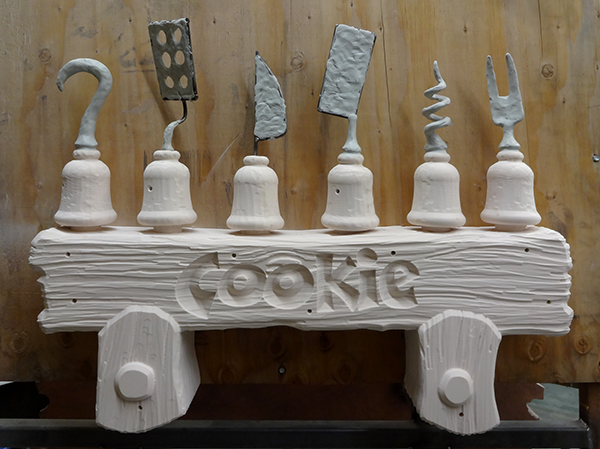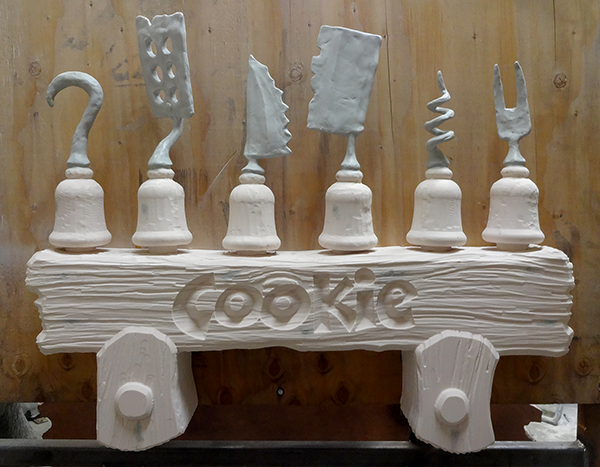Creating files in EnRoute and routing them on the MultiCam is a huge timesaver. By using bitmaps I can create wonderful textures to add dimension to our projects. But the fact is that after the parts are machines we are only about half way to finish on most of our dimensional projects. Cookie’s utensil rack is a good example. I designed the concept freehand in my sketchbook and then imported the drawing into PhotoShop to create the final rendering. I then used this concept to create the vectors by tracing the outline and letter shapes.
Once the file was done the MultiCam made short work of routing the many pieces and did the job in a small fraction of the time I could have done it by hand. I like to think I’m fast but the router can do the same task about five times faster. It’s far more accurate than I am too resulting in much more precise work.
I then glued up the pieces using Coastal Enterprises one part glue PB Bond 240which is activated by a spritz of water. This hue expands as it cures leaving a little squished out on the seams. No matter though for I used an air-powered die grinder to take this off at the same time I added the woodgrain texture to the tops and sides. It only took a few minutes to do a piece this size.
The two halves of each arm attachment base were also glued together and then shaped with the die grinder. Rather than try and make them perfectly smooth I purposely left texture behind as I used the die grinder. This will make the attachments more ‘authentically used’ as we add the paint and glazes – all in the interest of telling our story. I then drilled holes in the top of each piece and inserted a shaped and welded armature for each utensil. I would use Abracadabra Sculpting Epoxy to sculpt the utensils over these steel armatures. If you look close in the pictures you can still see the welded steel frames. I do a rough sculpt first, allow it to cure and then do a final sculpt over that. It makes things a whole lot easier as the sculpting epoxy is soft and and can sag a little as you work if it isn’t properly supported.
I also used the epoxy to fill the screw holes in the woodwork. The piece is now ready for paint. For scale reference, the shelf is about 30″ long.




